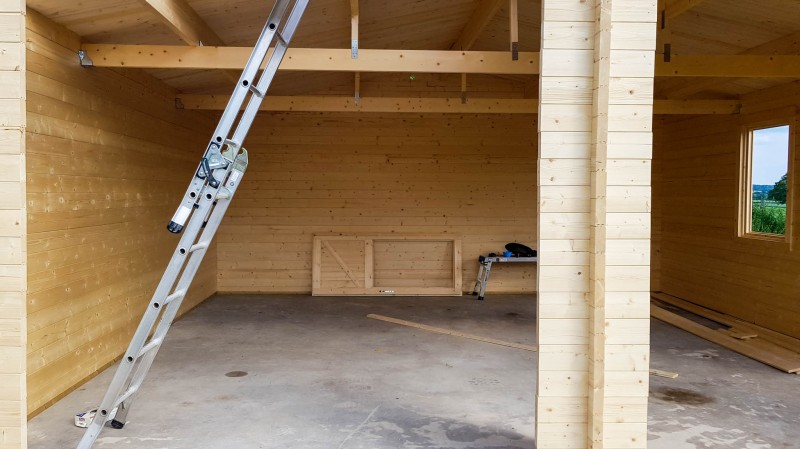You are here: 10 easy ways to make your extension more planet-friendly
There has never been a more urgent need to build sustainable homes
Making positive, greener changes to the way we extend and improve our homes isn’t just the reserve of the minority, the eco-warriors among us. Sustainability is now a mainstream concern.
Despite the soaring price of building materials, a huge amount is sent as waste to landfill. Construction, demolition and excavation accounts for a staggering 60% of the UK’s total waste, according to the Department for Environment, food and Rural Affairs. The construction sector accounts for about 40% of energy and process-related carbon emissions in 2018, 11% of which resulted from manufacturing building materials, such as steel, cement and plastic. Upsizing your home in a non-sustainable way means contributing to the building sector’s share of man-made global emissions.
The good news? Our homes are one of the easiest places to make positive, environmentally friendly changes. Just a few tweaks can make for a much greener project. Focus on the three Rs of sustainability: reduce, reuse and recycle.

Scale down your project
Bigger is not always better when it comes to extending a home. Remember for every extra square metre in your extension you will need more materials to build it, more energy to heat it and more fittings and fixtures to equip it. Carefully consider if you should build a smaller extension with sustainable materials or a larger, lower-spec version? How much extra space do you really need?
Source local materials
Many of us are now aware of the merits of buying locally sourced food, but what about building materials? Historically homes were built from materials that were easily and cheaply available, such as bricks made from local clay or flint in chalk-soil areas. Today we use products from across the world but rarely does the price reflect the environmental cost. The cheapest building materials became less sustainable if they are shipped from the other side of the world, so try to source local products. That said, locally sourced timber can be hard to find. Currently the UK, imports about 80% of its timber, second only to China. More homegrown timber is needed to cut carbon emissions from construction and lead to greener homes.
Use local building professionals, trades and craftspeople
This follows on from the previous point, but choose local architects, surveyors and builders as well as trades and craftspeople. Firstly, they are more likely to know where to source local materials and at good rates. Secondly, you are putting money back into the local economy and if you use traditional materials, such as handmade clay bricks or willow hurdles, you are supporting traditional craft skills that are in danger of dying out. Plus, your building team won’t have to travel so far which not only saves petrol but makes it easier for them to attend site at short notice.
Use natural materials
Ask your architect for advice on sourcing eco-friendly materials with a low-embodied energy that are not polluting in their manufacture, use or disposal. That doesn’t mean building a straw ball extension, though that is an option. A more mainstream approach is a timber-framed extension, so long as the company can prove the wood is from a renewable and sustainable source. Look for the Forestry Stewardship Commission (FSC) logo to give assurance that the timber is not only renewable but comes from forests that are responsibly managed. Timber frame buildings are easier to make airtight than both cavity masonry walls and solid masonry walls. Better airtightness means lower energy use throughout the lifetime of the building.
For those on a tight budget, a green roof can help replace some of the ecology lost when building a new extension. Options include wildflower and grasses seed mixes to support pollinators and wildlife. Other natural building products include sheep’s wool or hemp insulation, traditional lime-based mortar and cork flooring.
Ditch plastic
Ditch plastic and use alternatives from timber frame windows and doors to metal rainwater products. More than 50% of all PVC manufactured is used in construction in products such as windows, pipelines, wiring, flooring and even wallpaper. A Greenpeace report, ‘Look out – your choice of window could seriously harm the planet,’ argues timber windows are by far the best environmental choice so long as the timber is properly sourced and managed and care is taken in the choice of preservatives, paints and stains. The environmental impacts of plastic include the time it takes to degrade, pollution and harm caused to wildlife. On the downside, timber windows can be expensive and require maintenance.
Reuse materials
If your project involves demolition, such as knocking down existing walls, remember building materials can be reused rather than thrown in the skip. Bricks and broken tiles can be crushed to create hardcore for laying under patios and paths, reducing waste to be removed from site. Wooden flooring, beams, windows and doors can also be repurposed. Old kitchen cupboards can be reused in a new utility room, for instance. Reusing materials doesn’t necessarily mean they have to be incorporated in your new extension. Building a garden shed out of timbers and windows from your original house or surplus to requirements, is still saving precious resources. Brief your builder that you want to reuse materials as much as possible if that is top of your agenda.
Buy secondhand
Buying second-hand is a clever way of extending the life of products. Reclaimed wood can be used for many building purposes, including structural framing, flooring and cabinetry. Plumbing components, can sometimes be used in their original forms instead of having to be recycled and manufactured into a new product. Make online visits to architectural salvage yards for items such as fireplaces, doors and steel rolltop baths. There are also great online sources, including Freecycle, Gumtree and ebay. If you buy new, choose durable products with a long lifespan.
Reduce water usage
In the UK, toilet flushing accounts for 30% of household water use. That’s a lot of drinking quality water literally going down the pan. Rainwater can be harvested for toilet flushing, clothes washing machines and outside use. It’s relatively simple to do with water collected off the roof via standard guttering and downpipes, filtered and usually stored underground before being pumped back into your home for non-drinking purposes. Other ways to reduce water usage include fitting cistern displacement devices into existing WCs (available free from your local water supplier) or, if buying new, choose super-efficient models with an effective flush of 4.5 litres or less.
Insulate, insulate, insulate
To comply with Building Regulations your new extension will need to be well insulated. Airtight design and construction is important to reduce heat loss too. There’s not much point in having lots of insulation if air can leak through the building fabric. Choose building professionals experienced in energy efficient house design and construction. For example, your builder will need to take care to eliminate thermal bridges, also known as cold bridges, in the insulation. Bridging can also occur in the structure, for example timber studs and metal wall ties. Making your home extension more energy efficient will cut your heating bill and carbon footprint.
Reduce energy use
Passive solar gain refers to the heat collected as the sun shines through south-facing windows. The solar heat is absorbed and stored by masonry walls and floors, reducing the need for additional heating. It sounds simple but factors to be considered include window location, glazing type and shading, so talk to your designer. If you wish to install solar panels on your extension roof to convert sunlight into electricity, contact an installer who belongs to a Competent Person Scheme. As part of your building project, you may consider upgrading an old boiler with an A-rated condensing boiler with thermostatic radiator valves in each room. Alternatively, switching to a heat pump will cut your consumption of fossil fuels and produce a clean heat.
Eco-friendly construction is building a structure that is non-harmful to the environment. There are many things to consider from use of materials that are sustainable and non-toxic to efficient use of water, energy and waste reduction measures by enabling reuse and recycling. Use our website to find an architect, builder or surveyor who can help you build your dream extension without it costing the earth.
If you are looking to make some home improvements, you may find some of these services useful
Building Regulations
Find details of local experts who can help with Building Regulations
Builders
Find local help with a building project
Architectural Design Services
Find local Architectural Design experts
Structural Inspections
Find an expert to carry out a structural inspection
Building Surveys
I want a local surveyor to do a Building Survey for me
Choose which Architectural service you require
If you are not sure which service you require, check out the options available...


